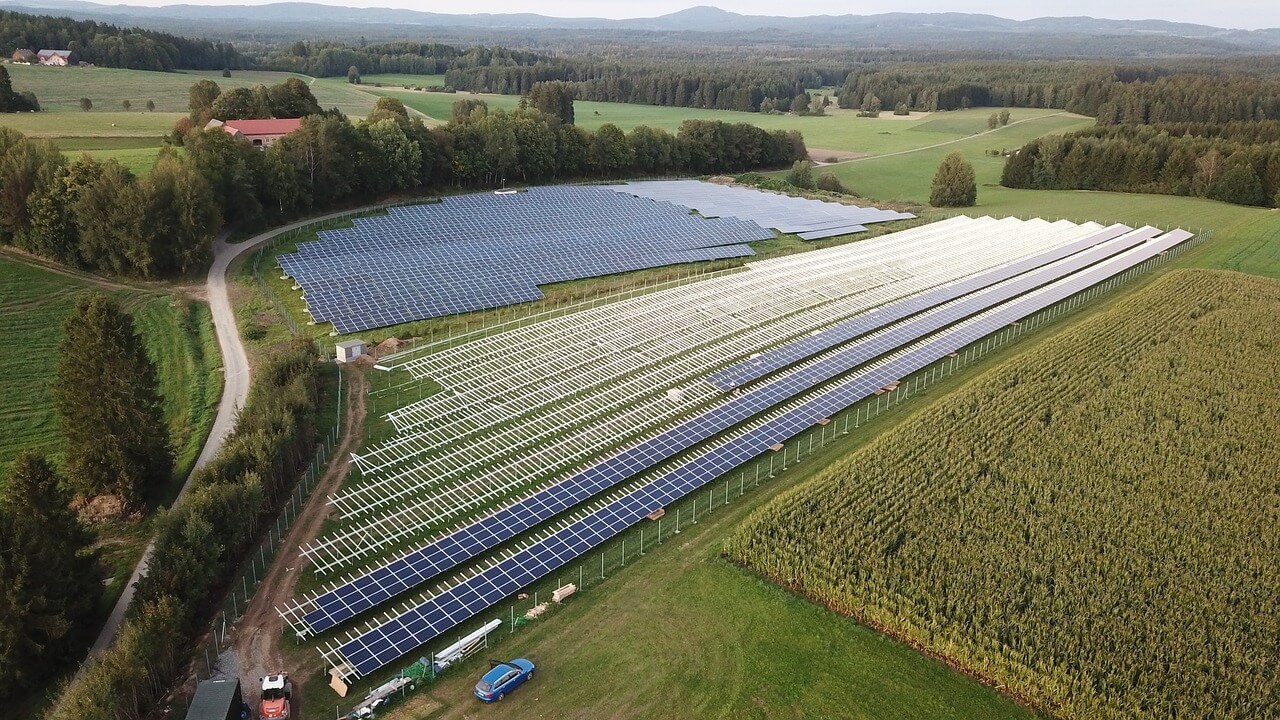Global warming is becoming an increasingly pressing problem and this makes us understand that the current model of life, and mainly our energy production and consumption, is not sustainable.
In a current context of uncertainty due to the scarcity of fossil fuels, with an exponential increase in the average temperature of the planet and with increasingly strict carbon emission limits, renewable energy sources and technologies are significantly emerging as the necessary alternative to face a change in energy consumption.
Likewise, photovoltaic solar energy is presented as one of the cleanest forms of electricity generation, as it does not produce any emissions while being generated. Several studies have shown that the carbon footprint during the life cycle of photovoltaics is lower than that of fossil fuels.
But what is solar photovoltaic energy?
Although it is already well known, it is important to know what photovoltaic solar energy consists of in order to understand the positive impact it has on our planet as well as on the environment.
According to the Institute for Energy Diversification and Saving (IDAE), photovoltaic solar energy takes advantage of solar radiation by transforming it directly into electrical energy thanks to the photovoltaic effect, which basically means the emission of electrons by a material when it is illuminated with electromagnetic radiation (in this case, solar radiation).
There are basically two types of solar photovoltaic installations: stand-alone, mainly for pumping, signaling, communications and rural electrification applications; and grid-connected installations for self-consumption and sale of the electricity produced.
Ecological benefits of solar panels
Photovoltaic installations have multiple associated benefits but the most important and undoubtedly the one that concerns us most in this article, is the reduction of consumption electricity from the grid. The panels generate their own electricity, so consumption from the grid will be lower and this results in a reduction of emissions associated with electricity generation.
In the Spanish mix in 2018 emissions were on average 246 g CO2/kWh. This means that for every kWh of electricity produced from renewable sources we avoid emitting 246 g of CO2 into the atmosphere.
Another important benefit of implementing this technology is the reduction of pollution-related diseases such as pneumonia, bronchitis, asthma or heart attacks. Such a reduction in emissions has a direct impact on the citizens’ health. All the money spent on curing the mentioned diseases could be used for different purposes.
It also prevents ecosystems from being devastated by refineries or companies depending on fossil fuels. Moreover, it helps to slow down the environmental damage, such as the felling of trees or water polluting.
What does the current situation in Spain look like?
Spain, as many other countries, is taking firm steps in its energy transition process. The data from last year, 2021, when renewable energies improved their records, especially solar photovoltaic, is great proof of this. Thus, throughout last year, the installed capacity of photovoltaics increased by 28.8%, incorporating more than 3,300 MW to the national electricity generation.
The boost allowed the electricity production to experience an increase of close to 37%, as shown in the Advance of the Spanish Electricity System Report 2021, a document published annually with the main magnitudes of the sector in Spain.
In 2021, renewable energy technologies continued their growth. At the end of 2021, 56.6% of the national electricity has been produced from renewables and their capacity was 112,846 MW. In total, the Spanish national electricity system has added more than 4,000 MW of renewable sources capacity.
Solar energy is an obvious choice for a low-carbon future with reliable, long-lasting energy, and it not only helps mitigate climate change, but also stimulates economies, creates new jobs and improves the integrity and security of the grid.
This is why the governments, especially the European Union and consequently the government of Spain, are already mobilizing to promote the implementation of this clean way of electricity production.
Perfect proof of this are the all new regulatory standards, which were explained in detail in previous articles, which seek to promote this technology by reducing the impediments that we found in the past and that have hindered its growth.
We also know that Europe considers photovoltaic installations as the best present and future alternative, aiming to double photovoltaic capacity by 2050 and to install 600 GW by 2030. In this way the governments intend to promote installing solar panels in both residential and commercial sectors.
In addition, more and more companies are opting for photovoltaic solar energy to reduce the cost of their electricity bills, while reinforcing their corporate environmental commitment and providing them with a differential value and greater competitiveness compared to companies that do not have this type of installation.
If you also want to help the environment and benefit from all the advantages offered by photovoltaic installations, contact LRP Energy so that our Energy Advisors can carry out a totally free and personalized study.

